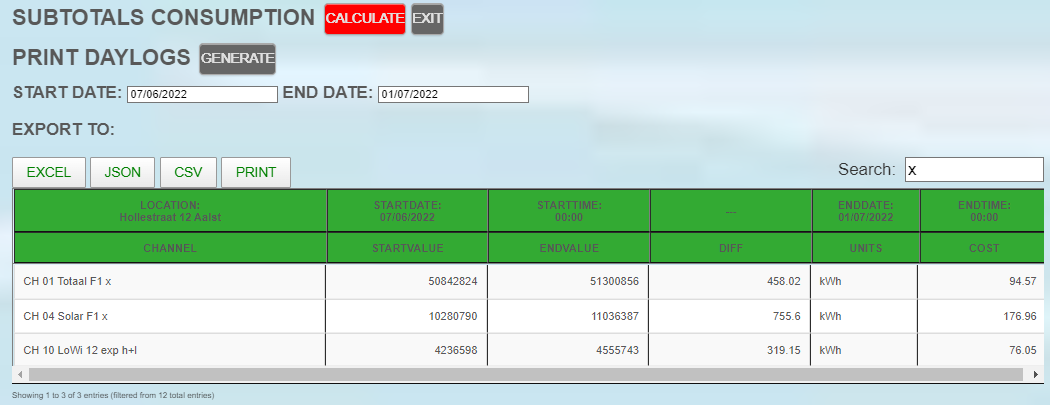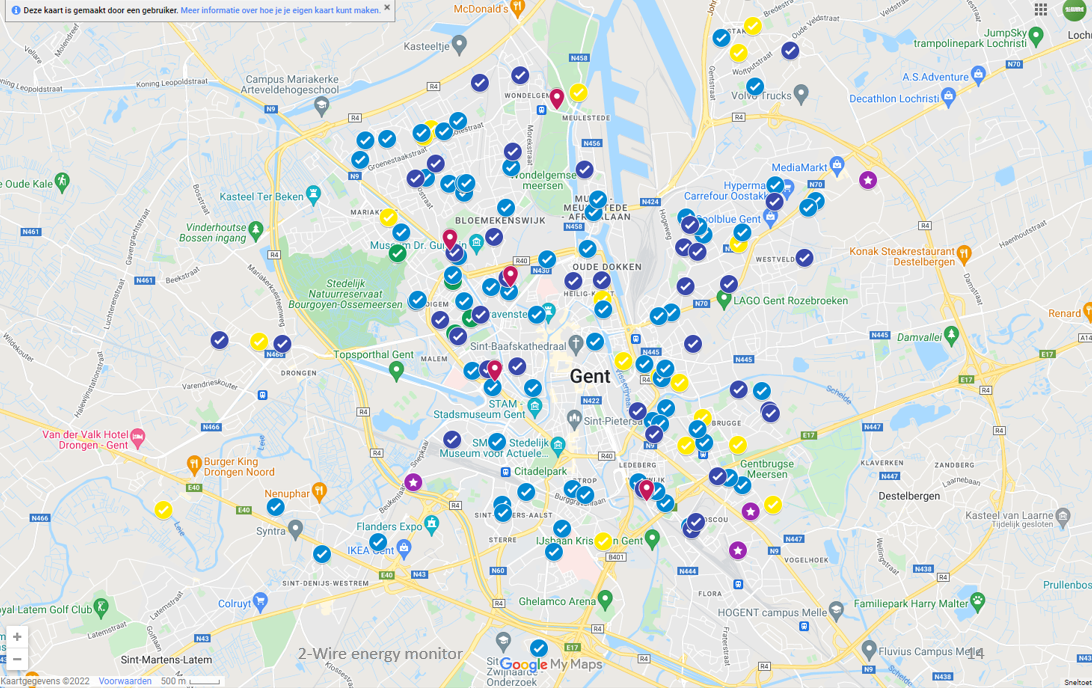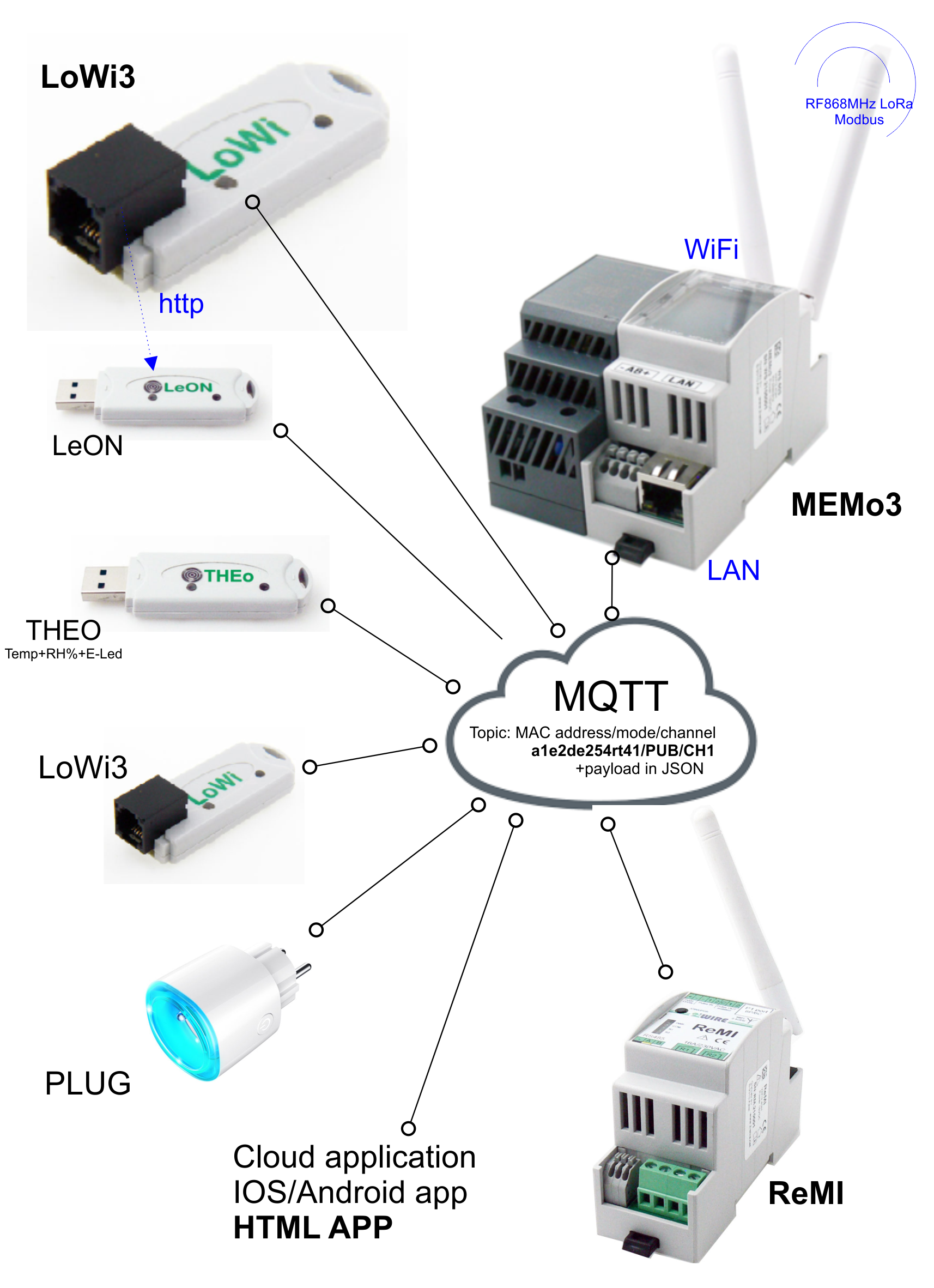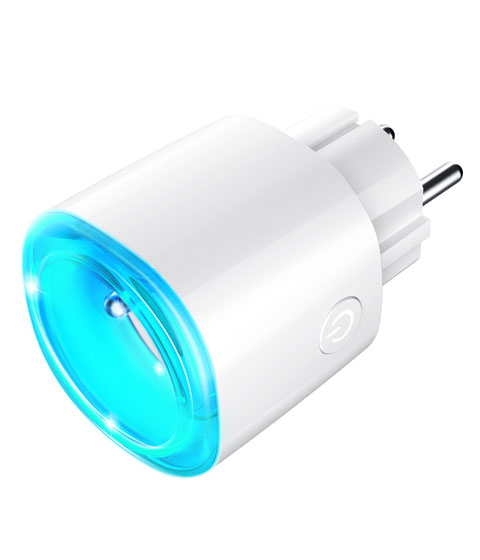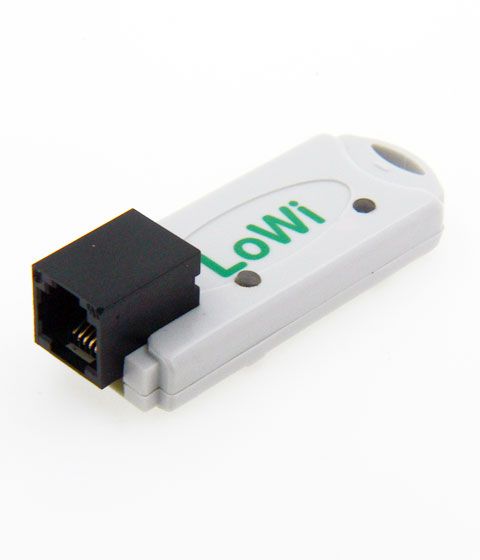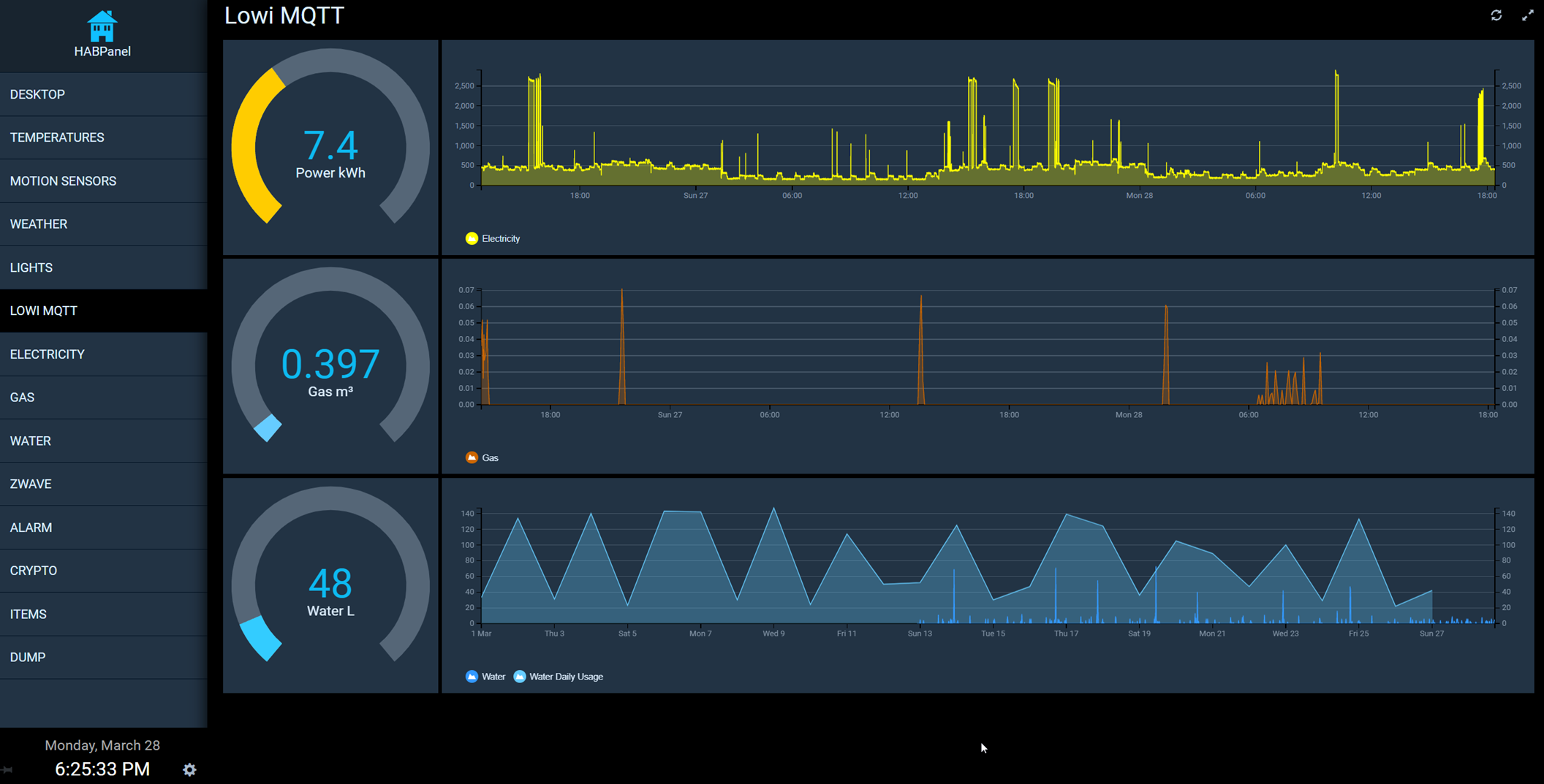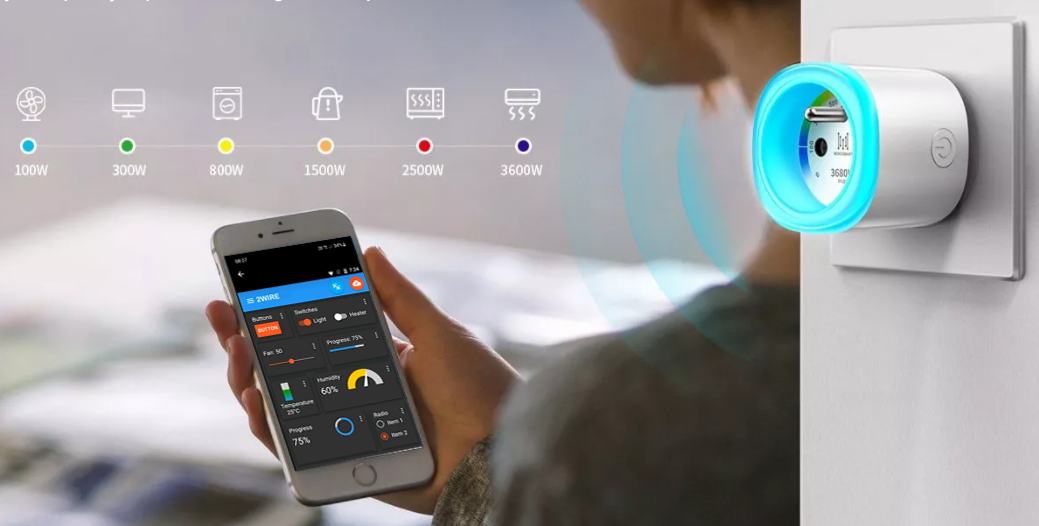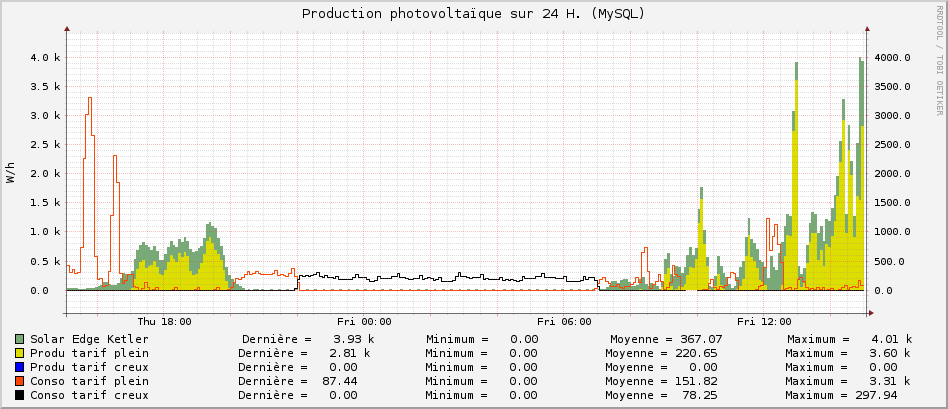Internet Of Things
Both over http and over MQTT there are possibilities to link via hardware or software with 2-WIRE
Internet of Things
LoWi3, MiLo, ReMI and MEMo3 register energy data from the connected meters and use it for the histories in the web server, for cost settlement, for control based on consumption,…This locally stored data can be shared in several ways:
Export to Excel in the form of a csv file
- For LoWi, MiLo and ReMI this can be done via the ‘PRINT’ button at ‘DETAILS’.
- In Memo this can be done via the ‘SUBTOTALS’ button.
Export via http to a freely selectable central platform
- At Milo via FTP or via http post, on day+1 a 24h file with 1 hour resolution
- For LoWi3 and ReMi via http post, every x minutes or once a day at 5′ resolution
- For MEMo3 via http post (AMR) layout, every x minutes or once a day at 5′ resolution
Export via MQTT every minute between web servers LoWi3,ReMI, MEMo3 among themselves or with the smartplugs and THEos, or to an external app or cloud application.
- As Topics based on the MAC address with a pay-load in JSON format, see
MQTT Manual
Export to Excel
LoWi, MiLo, ReMI
For the daily graphs, MiLo records the last 7 days at 1 hour resolution, LoWi3 and ReMI record the last 10 days at 5 minutes resolution. For the monthly charts, that will be the last 12 months at 1 day resolution. The ‘PRINT’ button under ‘DETAILS’ exports the chart data per day or per month to a readable csv file with the same resolution as in the charts.
MEMo3
MEMo3 records 7 variables in 32 bit format every minute for each of its 64 energy channels and stores these values for the last 3 years on its internal SD card. With the button ‘SUBTOTALS’ one can:
- Either give a start and end date to calculate meter readings, consumption and costs and export to Excel, useful for energy cost settlement.
- Either one can give a single a start date and from this date a csv is then generated in the form of an AMR file containing all 5 minutes of data (7 variables per channel) from that day.
Charging via http
The data loggers LoWi3, ReMI and MEMo3 can be set to upload data periodically to a private http server.
In every http post, the MAC address is readably sent along in the url. The remote server can then do an initial test and see if this MAC address is available in its directory listing. The http file is in JSON format and consists of a header and a body.
The header is encrypted by the web server with a ‘secret key’. One can use this header “as a certificate” to have additional assurance of the sender’s identity.
The Body contains the measurement data in base64 format and this can be easily converted to a readable format. The result is very similar to the csv file which creates the export to Excel.
An example is the http link to EnergieID: In the LoWi3/ReMI setup paste the EnergieID url and login and the data is continuously loaded. Useful for backup, or to compare installations among themselves. In the City of Ghent’s Renometer project, energy consumption before and after home renovation is monitored.
Connecting to an MQTT server
2-WIRE data loggers and 2-WIRE modules interconnecting over the Internet, or forwarding data an external system (Raspberri Pi, home automation …), or to an application on a smartphone or in the cloud, it’s all possible via MQTT.
The prerequisite: stable internet and an MQTT license at 2-Wire or another broker.
MQTT between web servers
Via MQTT, we can pass any of the 16 log channels in a LoWi3, over the internet to e.g. a ReMI and a MEMo3.
In both web servers enter the MQTT account settings (url, login and password) and all log channels of both web servers are published (PUBLISH) every minute as Topic based on the MAC address.
- MAC address/PUB/CH1 … CH63 with a payload in JSON.
To subscribe to this external data, create an MQTT log channel and give it a name, enter remote MAC address and respective channel number and the internet data is logged to monitor and switch.
- Applications: Sharing energy by measuring in one building and switching in another based on that, backing up to a second data logger, logging multiple LoWi sticks in one MEMo3,…
MQTT with a smart plug
Distances no longer play a role, place an MQTT plug and then monitor and control it from another location, idem with the THEo stick with which one monitors air quality from a distance.
MQTT with the digital meter via P1
With the ‘fast publish’ button in the LoWi3 and ReMI, the digital meter values are loaded to MQTT every 10 seconds and thence forwarded to any linked server or application.
Topic: MAC/PUB/CH0
Data (payload) is JSON:
- “ident” = MAC address
- “device_CH” = 0
- “Name” = P1_ALL
- “Type” = P1
- “Units” = Varia
- “U” = voltage (V)
- “I” = current (mA)
- “PI” = power import (W)
- “PE” = power export (W)
- “T” = tariff (1 = High, 0 = Low)
- “CIH” = counter import H (Wh)
- “CIL” = counter import L (Wh)
- “CEH” = counter export H (Wh)
- “CEL” = counter export L (Wh)
- “CG” = counter gas (liters)
- “CW” = counter water (liters)
MQTT to openHAB
open Home Automation Bus (openHAB) is a software solution developed in Java that connects building automation components from different vendors in a protocol-neutral manner in one manufacturer-independent platform. Via wireless or non-wireless protocols (ZigBee, WiFi, Bluetooth, Z-Wave, GSM, KNX, Ethernet) lights, curtains, alarms, audio and video can be controlled and monitored.
Via MQTT, 2-Wire web servers (LoWi3, ReMI, MEMo3) and modules (Smartplug, THEo) can also be linked to openHAB.
From a 2-WIRE user we received some screenshots of his integration into openHAB.
MQTT to Home Assistant
Home Assistant is an open source platform for centralized control of smart devices and home automation, with a focus on freedom and privacy. The software can be used either as stand-alone software, within a container or with an associated operating system. Home Assistant can then be accessed through a Web interface and mobile applications for Android and iOS.
Home Assistant can communicate via a wide range of integrations created by volunteers with common home automation platforms from Google, IKEA, Amazon, Apple (HomeKit), Signify (Philips Hue), Tuya and via MQTT with the 2-WIRE web servers, among others LoWi3, ReMI, MEMo3 and the WiFI Plug .
Measurements from the digital meter and also yield from solar panels or the consumption of the charging station can be integrated to provide the user with a live overview of energy consumption, and based on changes in this data to take automated action.
From Jean-Paul we got a few screenshots of his integration in Home Assistant, an example of his code can be found in the MQQT manual.
HTML APP
The HTML_APP is an html document containing the html, css and javascript code of the MEMo3 web server. Open this document with a web browser and enter up to 4 MEMo3 MAC addresses there with their MQTT account. Via MQTT, all measurement and configuration data are read and synchronized bi-directionally and live, one now gets full remote access to each of the four MEMo3s. Even working simultaneously with the HTML_APP and the web server is possible.
The HTML_APP combines the benefits of an app, cloud and port forwarding in one document which one stores on the hard drive of the PC, tablet or central server(website) and opens with any web browser.
Separate from the customer’s corporate network, one can connect a GPRS modem with SIM card to a MEMo3 and through the HTML_APP one has full access to all functionalities. Incredibly useful to be able to easily monitor an installation in terms of operation, consumption, costs,….
Android APP
In the play store of Android you can start downloading different MQTT apps, including“IoT MQTT Panel” by Rahul Kundu from India. This is basically a remote for smart home based on the MQTT platform in a free or a paid pro version. Here you can compose your own layout with line of bar graphs, radio buttons, speedometers,… light/dark mode, … with the different Topic and payloads from the LoWi3, ReMI, MEMo3, THEo, Plug,… from 2-WIRE and even combined with devices from other brands.
This APP also has ability to show historical consumption graphs with limited number of measurement points. Thus, even without a web server, one can control the autonomous WiFi (MQTT) plug, read out power and show ‘histories. Like the plug, the THEo stick can operate autonomously as a stand-alone MQTT device.
Verbruik pulsen naar externe datalogger
Elektrisch verbruik, injectie en gas uit de digitale meter worden via de PPC.04 module omgezet naar pulsen en dan ingelezen op eender welke datalogger. In het voorbeeld hiernaast gebeurt de inlezing en logging met een raspberry pi.
Ook de ReMI module heeft 2 solid-state uitgangen welke elk gemeten verbruik kan omzetten naar verbruikspulsen.
Decision:
2-WIRE web server data loggers collect consumption data and can start displaying it live via web browser, on any platform within the network. Web servers can be set up to publish or upload this data to external applications. We use standard protocols and file formats so that integration can be done with a minimum of development.
Please note that the purchase price of the modules does not include extensive support for development of your own applications.
Free development package on request
Fill in the required fields and get the free development package in your mailbox!


